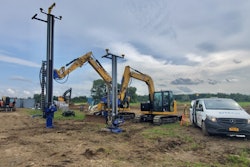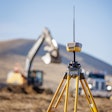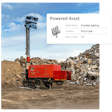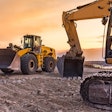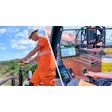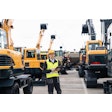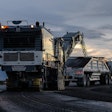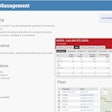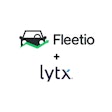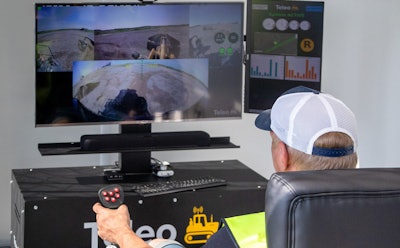
Construction equipment autonomy vendor Teleo announced October 4 that Florida-based Tomahawk Construction will become the first customer to deploy its autonomous capabilities on an active job site.
Fort Myers-based Tomahawk Construction's articulated dump trucks will be able to use autonomous functions to move material to build a residential community in Naples, FL starting in December.
In addition, Teleo announced deals with eight new construction customers, including Florida-based Ajax Paving Industries of FL, LLC. Collectively, Teleo's new customers have placed orders for 42 machines. Teleo also announced the addition of Ozark Laser, Murphy Tractor and Position Partners to its global dealer partner network, establishing its dealer footprint across seven states in American Midwest, Australia, New Zealand and Southeast Asia.
Tramming Autonomy
The initial autonomous capability being launched by Teleo is tramming, or autonomous hauling materials from one point to another. Tomahawk Construction will use Teleo-equipped articulated dump trucks for autonomous tramming across a Naples, Fla. job site where they will move material to build a residential community. The autonomous feature introduction will begin on three machines and roll out to 12 machines over the course of a few months. Operators driving dump trucks spend the majority of their time tramming from one point to another. By automating the tramming portion, one operator can run multiple machines simultaneously, multiplying their productivity. The physical dumping of materials will be handled remotely by one operator controlling multiple machines from a comfortable command center.
"Teleo's technology has the potential to completely transform our operations," said Scott Lyons, Managing Member, Tomahawk Construction. "With Teleo, two of our dump trucks that have been idle will be put back into service to haul dirt across the site autonomously, allowing our remote operators to do more. This will help us to run a more efficient operation."
To date, Teleo has been testing the autonomous capabilities on two John Deere 333G Compact Track Loader skid steers at its Pleasanton, Calif. proving grounds, and on a Komatsu WA500 wheel loader moving dirt at the Ouluzone race track property in Finland, which is affiliated with the University of Oulu.
IRONPROS caught up with Teleo Vice President of Sales Mark Piotto in an early October, 2023 debriefing session to come to a better understanding of the initial use cases for autonomy on complex sites.
IRONPROS: What intrigued us about this announcement is that what you've got is a deployment of autonomous equipment, not in like a mine not in something like solar field construction, but in a site that likely is going to have a little bit more going on with it, with more equipment and people than where we normally would see this type of tech. Is that a correct understanding?
PIOTTO: Yeah, that's exactly right. It's a subdivision. And it's the pre-stage, obviously, we're going to start moving some topsoil with ADTs (articulated dump trucks). It’s a very exciting moment to be sure.
IRONPROS: So what type of other equipment or people or how complex is the site going to be? I mean, my guess is that it's not going to be, like, the most chaotic, uncontrolled environment that you're going to find in a project like this. And there might be some safeguards and everything like that in place. But, you know, are there certain things that are being done to mitigate any risk?
PIOTTO: Oh, for sure. Safety is a huge concern for us. And we want to make sure that people are safe first and foremost. It is a subdivision, so we're going to start off with moving the topsoil. It's a cut-to-fill balanced site. Nothing is being removed from the site. In fact, I think he's got to fill in a few lakes, build some dirt bridges in order to make the haul roads even shorter. As you know, Florida normally has very wet conditions. So as far as humans on site, we're definitely mitigating all human interaction. They definitely are going to be trained and are aware of the fact that there's autonomous machines walking around.
IRONPROS: So with the equipment, what can you tell us about the equipment itself, and the technology that they're equipped with? And have there been improvements or enhancements to what you're offering that really kind of paved the way for this development?
PIOTTO: With the Teleo supervised autonomy solution, we do take an incremental approach to the road to autonomy. We want to ensure that there's always a human in the loop. We've got various sensors on the machine to ensure that obstacles are seen and that the machine comes to a safe stop. If it doesn't like something that it sees, and it warns the operator, the UI on our graphic display allows the operator to know when the machine is coming to a stop, and when it reaches its destination for the final dump. So safety is our number one priority. I can't say that enough during an interview.
IRONPROS: So when it comes to, you know, the way that the Teleo system learns and gathers inside of borders it should respect and its environment, what types of data capture are we talking about? Stereo cameras? Lidar? What do you have on this thing?
PIOTTO: Yeah, so there's LiDAR, there's dual GNSS, human detection and obstacle detection. There is always a human in the loop, as I mentioned, and the operator has to intervene for various scenarios. The ADTs are designed to get stuck, and in Florida, it's a very wet environment. So I anticipate them getting stuck. And AI needs to learn how to unstick the ADT.
IRONPROS: So is that operator often within line of sight? Are they just located somewhere else entirely? Can you do either or both?
PIOTTO: So we're going to start off again, with safety the number one priority. But comfort for the operator and understanding their environment is very important. So we're going to start off with the command center on site. It probably won't be in line of sight at some points or stages in the operation because the ADTs are moving throughout the site. And eventually, over time, we will be moving the command centers to Fort Myers where the contractor, Tomahawk Construction, has more accessibility to operators. And that's the whole reason why they bought the system—because he didn't have the operators that wanted to travel the two hours to Naples.
IRONPROS: I've been traveling like a fiend the last few weeks. And, man, it's nice to be home. And if I could operate a piece of equipment sitting here, in my chair with good lumbar support, I’d totally do that. But once you move the operators away from the site, what types of safeguards do you have in terms of the connectivity, from the site to that location? And are you running some type of wide area network on the site to kind of connect all the machines to that backbone?
PIOTTO: So regardless of whether the operator is on site or thousands of miles away, the wire, the mesh network, that's on site has multiple safeguards. There's redundancy in our machine system to understand if communication breaks for any given reason—if a tower were to fall over in a windstorm—the machine would come to a complete stop safely. Loaded or unloaded, it would it would slow down, gear down, and come to a complete stop. And then if he's further away, it's the internet that we're communicating to.
IRONPROS: So as instructions are relayed to the machine from the operator, whether they're there on site or somewhere else entirely, is there a safeguard if in the middle of like a command string that's interrupted and it doesn't know what to do next? How do you deal with, with that type of situation?
PIOTTO: There's two brains in the system. So if it doesn't understand what the command is, again, it'll just come to a stop. But we've proven and tested it, and we're very confident that, again, safety is the number one priority, and the system's going to do exactly what the operator needs it to do. Remember, the only times the operator intervenes is when he's either picking up material or getting loaded by the excavator and when it gets stuck or he needs to dump that material in a specific location.
Managing Construction Equipment by Exception
IRONPROS: So it seems like we're dealing with equipment that is, at one point, highly autonomous, just in terms of the ability to understand what needs to be done at a given time in a fairly repetitive way. And the operator is really only managing by exception.
PIOTTO: Exactly. 100%, but he's managing his material. He's managing what AI is not capable of managing today. And he is forewarned when AI is confused. Our solution is built around ensuring that the human operating that system is always involved. And we need humans more than ever in our industry, and in all industry. But with our system, we're actually attracting people into the business, and that's the exciting part.
IRONPROS: So do you think that this is kind of a departure from the way that other vendors are pursuing autonomy because it doesn't mean literally operating the controls of the equipment as if they were in it? How much of a progression do you see between that approach and what you're doing here and autonomy solutions more commonly used in mines than on construction sites?
PIOTTO: So really, there's nothing being commonly used in mines today. This isn't a common everyday technology—it’s a buzz. word. Autonomy is a buzzword, but there aren't a lot of deployments in mines today, in the grand scheme of things globally. So the word being used commonly is not really what I would choose. But what I do know is, Cat Command is similar to our system, with the major differentiator is we're brand agnostic. That is what we're providing, because customers want to have a brand agnostic solution. And that's very important. How we interact with that tractor, whether it's a dozer or a truck, if it gets stuck, or if we're in tele ops, only, we're operating that machine in full control with 360 view.
IRONPROS: Did you have to, in this initial project, go through any particular licensing or permitting requirements to operate the machine on site?
PIOTTO: No, again, the operator is always in control … We're doing lots of training with the operators, and the owner of the construction company is struggling to find people. And the solution is one person managing multiple machines. That's helping him dramatically.
What To Know About Teleo Autonomy
IRONPROS: So what do IRONPROS readers need to understand about this type of technology on construction sites?
PIOTTO: I would definitely want to make sure that they're aware that it's not fully autonomous. The word fully autonomous or autonomous solutions scares people. I've been selling grade control for 20 years of my life, and contractors are still skeptical on grade control. So there's an operator always in the loop. We are here to attract people of different a demographic and or people that might never have considered to be on a on a machine in their life. And we're here to help employ people all around the world getting into this industry. It is an awesome industry, and I've been in it for a very long time. And we need people so we're not going to magically hit a button and people will go away anytime soon.
IRONPROS: So before we close up, let’s get your overarching motto in here one more time …
PIOTTO: Our number one priority is safety of operations.



